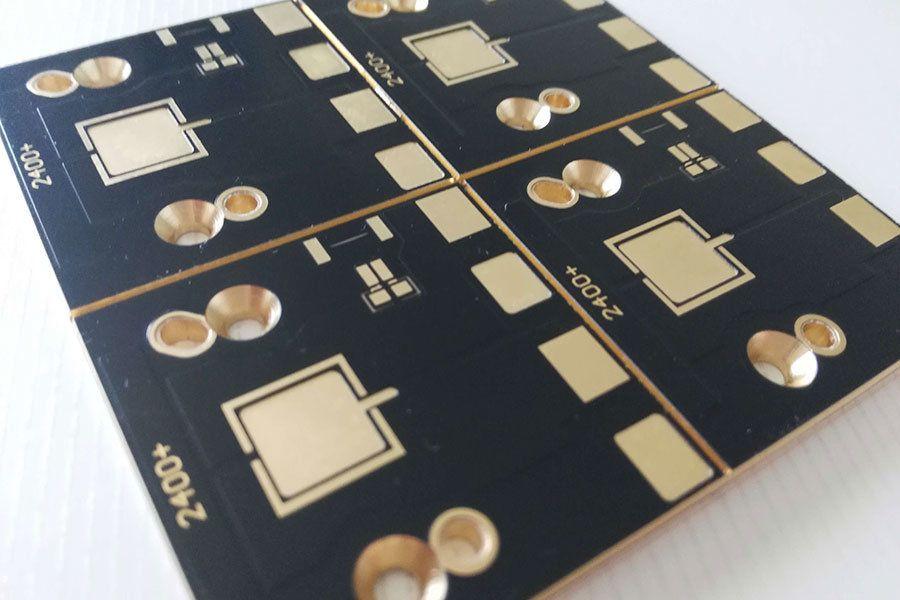
Thermally Conductive PCB
Hemeixinpcb, a thermal management technology company, announced its new MCPCB product, Copper Via embedded Aluminum Core PCB. This highly thermal conductive MCPCB is comprised of a regular aluminum core PCB and a specially embedded Copper Via that effectively draws the heat from the elements bonded on the top surface and distributes it to the aluminum core of the MCPCB. This innovation enables circuit engineers to have much less thermal restriction in circuit design and it offers more flexibility in components selection This unique and cost-effective process developed by Cofan USA to embed Copper Via onto the Aluminum Core is completely contamination-free, and it makes it possible to integrate into conventional Aluminum Core PCB manufacturing processes. As a result, the MCPCB’s thermal conductivity is further enhanced through the Copper Vias, with no increase in cost. The cost is the same as an Aluminum Core PCBs which is relatively much lower than that of Copper Vias on Copper Core PCB. This Copper Via embedded Aluminum Core PCB is currently available for order, and ready for market consumption as with the conventional MCPCB with Copper Vias on Copper Core.
When the copper metal pricing went higher and higher, use small pieces of metal to solve the thermal dissipation problem become important. Locally bond the metal coin by bonding film or sweat bonding is one solution. Plug the metal inside the PCB is another. One advantage of this process is the metal can be fit into the multiplayer construction during the lamination process. The coin grounding can be done by drill through-hole or use sweat bonding.
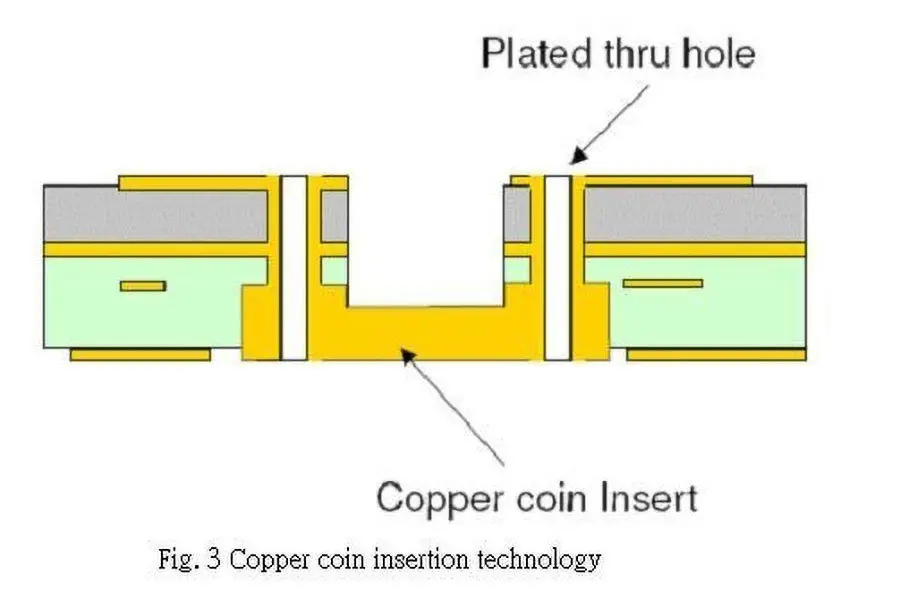
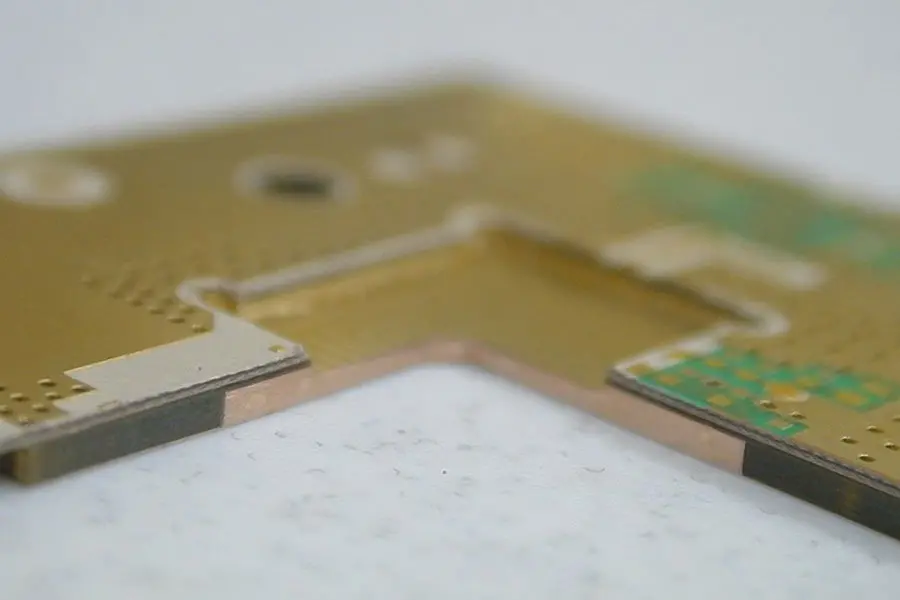
For the double sided PCB, plug the metal in PCB is also possible. It can be done by a process similar to hole plugging which we fill the epoxy resin in the slit between PCB and metal coin. However, the metal thickness needs to buy the close to the PCB. Usually the designer will ask the metal coin should be very flat at least on one side. Quality control needs to be careful.
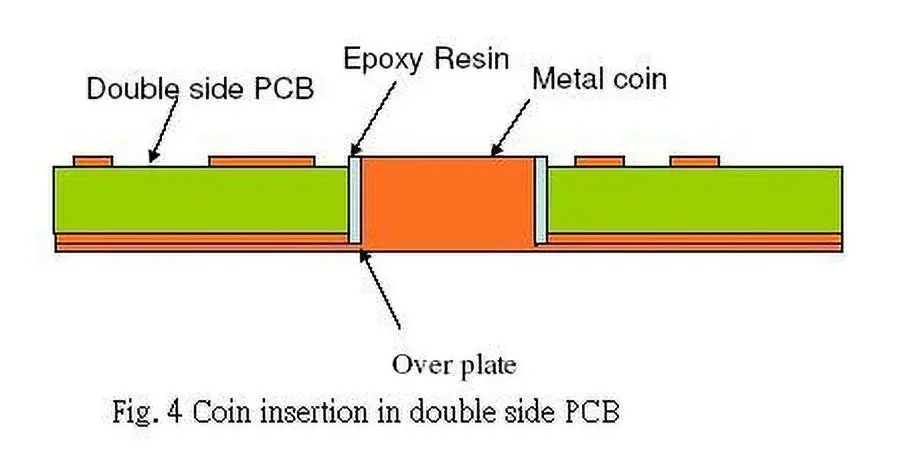
A similar insertion design can be done by the sweat bonding process. It is still in the concept stage. But I think it can be done, too. It’s a post bond process. One advantage is that only PCB pass the QA process will go to the bonding procedure. Please see my article “Sweat solder bonding technology for metal PCB”.
If the PCB is multilayer, and it needs to ground one of the layers to the metal coin, use electrically conductive paste is one solution. The slot needs to be edge plated first. The conductive paste fills in before outer layer processing. The conductive paste area on the top layer can be covered with a solder mask to avoid any kind of circuit short.
One advantage of coin insertion PCB is the light weight and easier assemble. For a metal bonded PCB, before the PCB assembly, a long time preheat is necessary. Cooling time is also longer for its high thermal capacity. For copper insertion PCB, if the coin size is small compare to the whole PCB, the PCB assembly is almost not be affected. Compare to the locally bonded coin, the flat structure can eliminate the use of the special fixtures.
High power LED substrate
For a packed LED component, aluminum-based IMS design is widely used in the industry (see Fig 5). The heat transfer from component goes through a high thermal conductivity (no less than 1 W/m-k) material to aluminum plate. The thickness of the dielectric material needs to be select carefully. The thinner dielectric which have lower thermal resistance may cause dielectric breakdown problem.
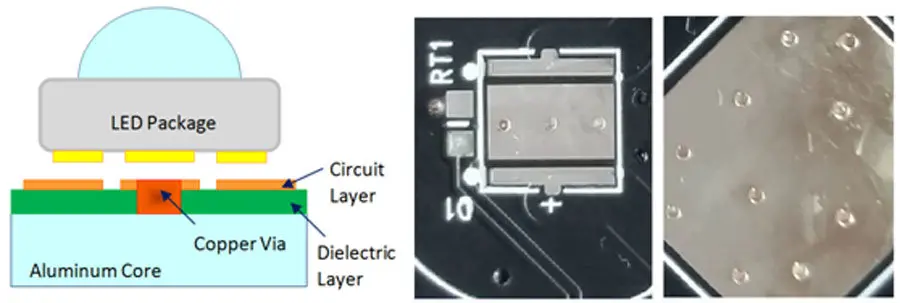
The LED chip can put directly on a LED substrate with cup design and copper backing to reduce cost and resolve heat problem. The quality of LED chip maybe a problem needs to be concerned. The cup usually designed with an optimum angle and plated with silver to get better reflectivity. The bonindg pad need to be plated with bondable metal like thick gold, silver or Ni/Pd/Au.
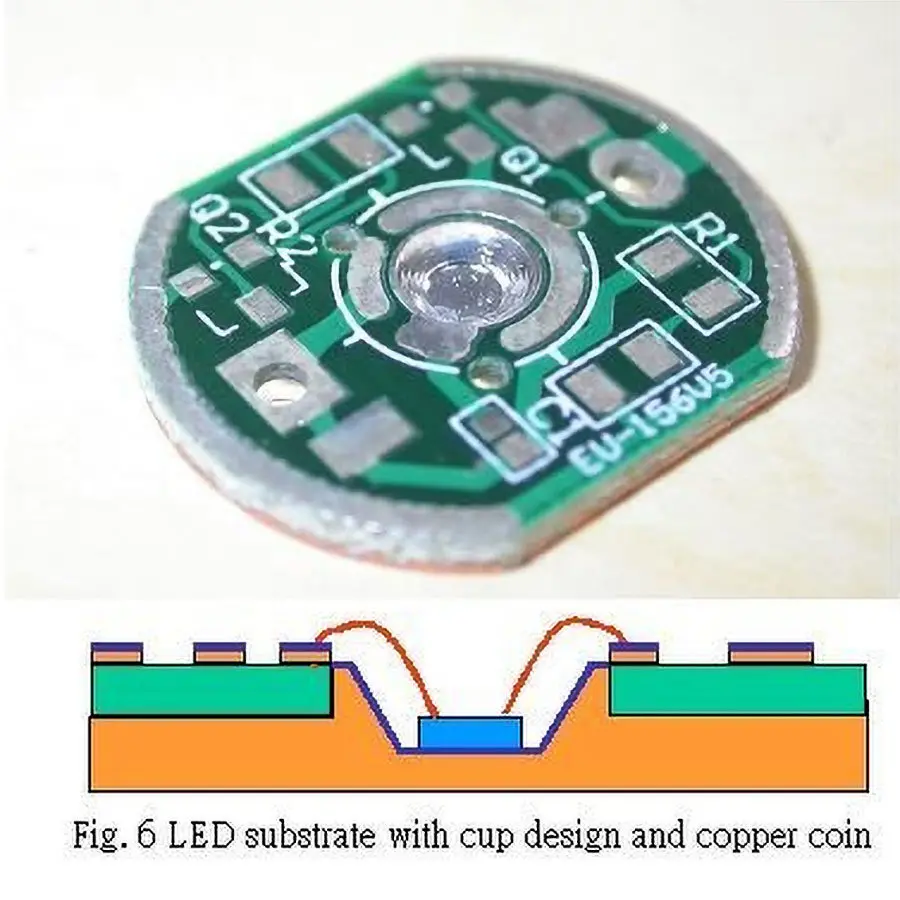
Boardtek also owned a patent which use a plastc or metal pre-formed cup to replace the cup that need to be machined in aluminum PCB. It can save a lot of cost and have better light performance.




